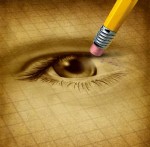Man with eye damage from 1962 eclipse: Don’t make the same mistake I did – Today.com
♫ Monday, August 21st, 2017share
pin
As Lou Tomososki and a friend walked home from Marshall High School in Oregon one afternoon in 1962, they gazed up at the sky. For weeks, everyone had been talking about the partial solar eclipse and the teens wanted to witness it. For a few seconds, they looked at the sun as a sliver of the moon slid over its surface.
While watching, he saw flashes of light, much like he would after having a picture taken with a camera with a flashbulb. He had no idea those flickers would lead to permanent damage.
We both got burned at the same time, Tomososki told TODAY. He got the left eye and I got the right eye.
During a partial eclipse in 1962, Lou Tomososki and his friend looked at the sun. They both experienced eye damage because of it.
While Tomososkis teachers warned him to use a pinhole projector box, which creates a reflection of the eclipse for safe viewing, he didnt heed the warning. Even today, the 70-year-old Oregon City man struggles to see if he relies only on his right eye.
We were just doing it for a short time, he said. I have a little blind spot in the center of my right eye.
Tomososki has been sharing his story because he worries people will look directly at the sun on Monday during the Great American Eclipse.
Millions of people out there are going to be looking out at it How many of them are going to say, Something happened to my eyes? he said. That makes me sick.
While his vision problem hasnt held him back, Tomososki wishes he would have known better than to look directly at a partially eclipsed sun.
Nothing has changed," he said. Its doesnt get any worse or better.
Fifty-five years after looking at the sun during a partial solar eclipse, Tomososki still has vision problems.
What Tomososki experienced is called solar retinopathy damage caused to the retina from looking at the sun. It's a pinpoint of blindness, often in the middle of the eye. People often experience it after looking at an eclipse because they mistakenly think that the suns rays arent as powerful since the sun is partially covered.
"Anyone who stares at the sun can get this blind spot, said Dr. Russell N. Van Gelder, a professor of ophthalmology at University of Washington School of Medicine and clinical spokesman for the American Academy of Ophthalmology. When you know that you have a problem is if that blind spot has not gone away (the next day)."
Eclipse fever: Cities along 'path of totality' prepare for flood of tourists Play Video - 2:50
Eclipse fever: Cities along 'path of totality' prepare for flood of tourists Play Video - 2:50
In half of patients with it, the blind spot diminishes. The other half experience the damage their entire lives. Thats why ophthalmologists urge people to never look at the sun even while wearing sunglasses.
It is never safe to look directly at the sun, Van Gelder said. The only way to treat solar retinopathy right now is to prevent it and not stare at the sun during the eclipse.
Those in areas experiencing the full eclipse can safely look directly at the sun at precisely one moment.
When the disc of the moon has completely blocked out the sun and the corona of the sun is visible, it is safe to look at the corona, Van Gelder said. The second the sun comes out, the eclipse glasses have to go back on.
Eclipse sunglasses warning: Beware fakes that won't protect your eyes Play Video - 4:01
Eclipse sunglasses warning: Beware fakes that won't protect your eyes Play Video - 4:01
Van Gelder recommends people refer to American Astronomical Associations website to find ISO-certified eclipse glasses.
He also stresses the light can damage a cell phone cameras sensors and says people need to use glasses over the sensor to take pictures of the eclipse.
You can burn out your camera in the cell phone just like your retina, he said.
For his part, Tomososki hopes people learn from his story and protect themselves.
I am just so concerned that somebody isnt going to listen, he said. I am going to be out in the eclipse, but I am not going to look at the sun at any circumstances, even in the totality."
The rest is here:
Man with eye damage from 1962 eclipse: Don't make the same mistake I did - Today.com
